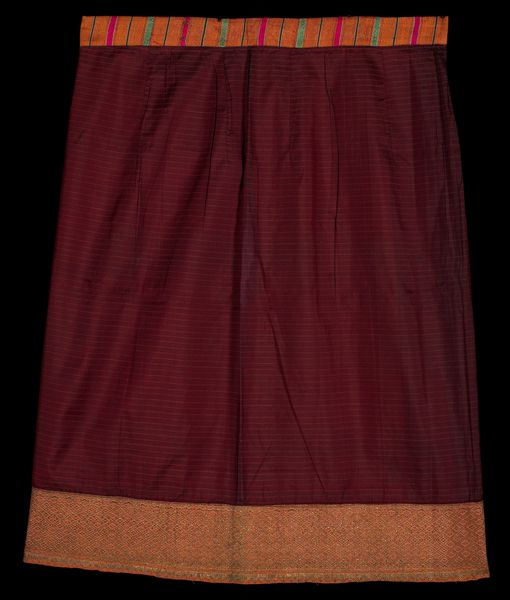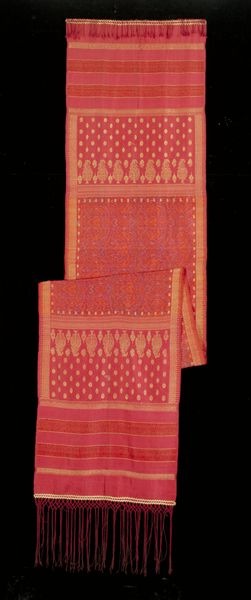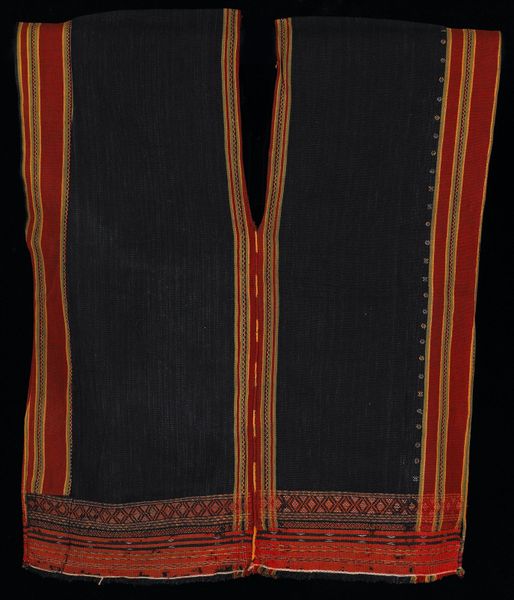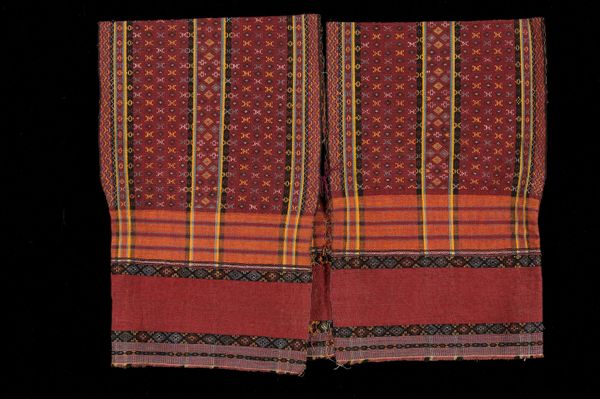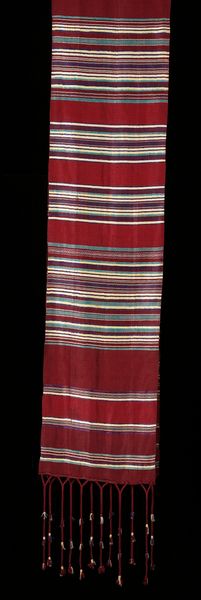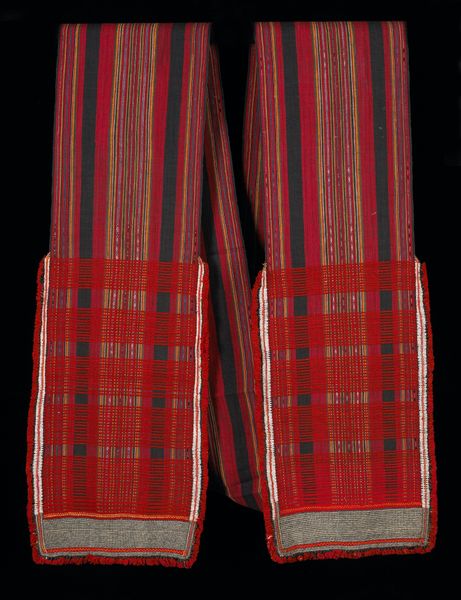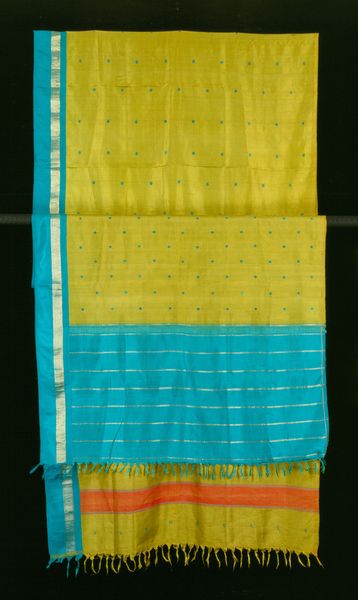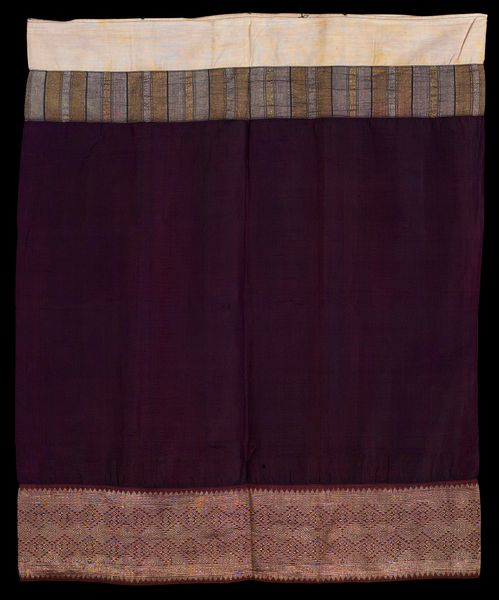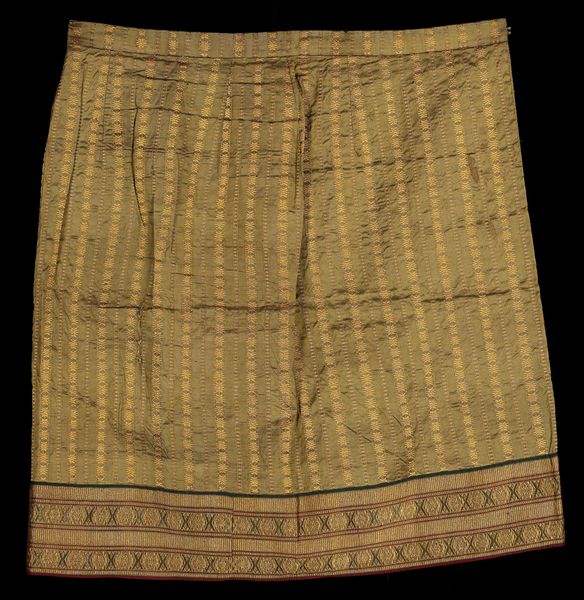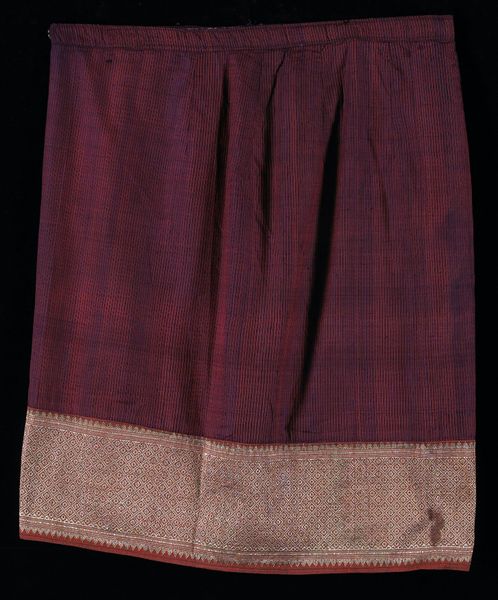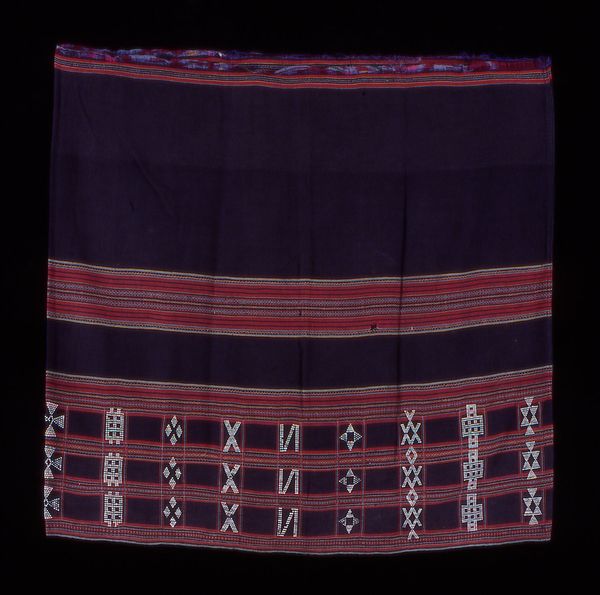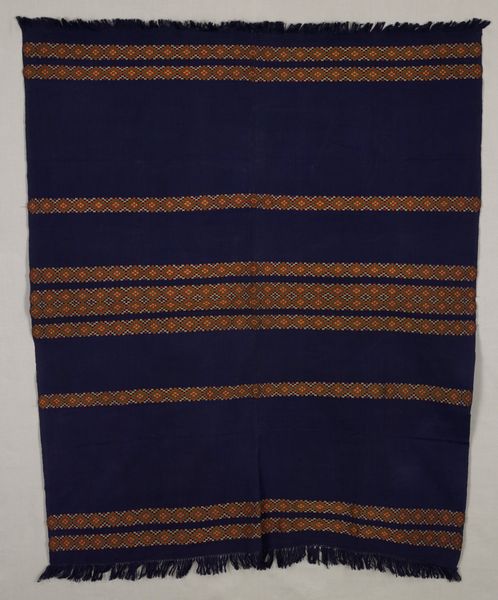
silk, textile
#
silk
#
textile
#
fashion and textile design
#
geometric pattern
#
pattern design
#
geometric
#
repetition of pattern
#
regular pattern
#
pattern repetition
#
textile design
#
imprinted textile
#
layered pattern
#
funky pattern
Dimensions: 66 x 26 1/2 in. (167.64 x 67.3 cm)
Copyright: Public Domain
Curator: What a beauty. We’re looking at a silk head shawl, created around 1920. I always find textiles so evocative, so full of untold stories about who owned and wore them. Editor: Oh, absolutely. I’m struck by the simplicity and the warmth. The way the golden yellow transitions to that sort of subdued brick-red section... it’s like a visual sunrise. Makes you want to wrap yourself up in it and wander through a marketplace. Curator: Exactly! And it's this balance between simplicity and ornamentation. Notice how the geometric patterns—those rhythmic lines of colour at the bottom—create a sophisticated visual dance, but within a very restricted colour palette. It anticipates mid-century modernism, I think. The emphasis is clearly on textile design, fashion and function as design, Editor: Do you think this kind of functional art changes the context, in a way? I mean, being *worn* through history changes art's trajectory...it's quite different from simply being displayed on the wall or being protected from exposure. How many conversations did this textile witness, on how many heads! How many families knew it? Curator: Absolutely! Think of shawls as transmitters of culture! Beyond its pure aesthetics, a head covering signals identity, whether cultural, religious, or societal. The way someone drapes it, its wear and tear… it tells tales of tradition and transgression. Editor: It almost turns the wearer into a canvas, wouldn't you say? The politics and identity literally become wearable in a sense, transformed to silk in shades of sunrise. You could even explore questions about class, and wealth; someone acquired and cared for the piece; silk doesn’t grow on trees, and colours were difficult to create! This head shawl tells such an elaborate history, the stories layering just like the textile patterns. Curator: Indeed. A reminder that the simplest things are often the most profound, imbued with all this narrative potential. I will certainly dream tonight what history looks like in gold. Editor: Me too; thank you, textile for these tales.
Comments
No comments
Be the first to comment and join the conversation on the ultimate creative platform.
